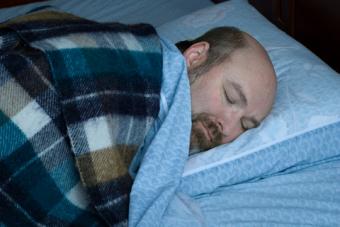
If you suspect that you may be narcoleptic, the first test that you may have is a multiple sleep latency test.
What Is the Multiple Sleep Latency Test?
Essentially, the multiple sleep latency test, or MSLT is a nap study. It measures your sleepiness by measuring how long it takes you to fall asleep during a time of the day when you would normally be awake. It's typically the test used to diagnose narcolepsy although it can help detect other sleep disorders as well.
People who suffer from narcolepsy typically fall asleep in less than five minutes during the MSLT. However, keep in mind that there are people who do not have narcolepsy who also fall asleep within five minutes and those who do indeed have narcolepsy but take longer than five minutes to fall sleep. Like all diagnostic tests, it's a tool but is not necessarily definitive in and of itself.
The MLST also measures how many REM periods you have. Typically, people reach REM about an hour and a half after falling asleep. Narcoleptics will often have a few REM periods during their nap trial.
What Can Affect the Results of the MSLT
The MSLT removes variables that can affect sleep such as being too hot or too cold, outside noises, or disturbing light. However, other conditions can affect the results of the MSLT such as:
- Depression
- Anxiety
- Caffeine
- Age
- How much sleep you got prior to the study
What Happens When You Have a MSLT
The MSLT is typically done after an overnight sleep study. During the MSLT you will be given four or five opportunities, approximately two hours apart, to sleep. The first 'nap opportunity' will be about two hours after you wake up from your overnight sleep study and after you have had a small breakfast. You will not be allowed to have any drinks with caffeine, and sometimes you will take a urine test to screen for drugs in your system that might interfere with your ability to sleep. In addition, you may be asked to fill out questionnaires before and after the sleep study. Electrodes are attached near the eyes, to the chin and to the head to measure eye movement, muscle movement, and brain waves respectively. It takes about seven hours in total to complete the MSLT and about two weeks to get the results.
Should You Have a MSLT
Not everyone who has sleeping issues needs an MSLT. However, your doctor may suspect you suffer from narcolepsy if you exhibit some of the following symptoms:
- Loss of muscle control often associated with strong emotions like laughter or crying.
- Hallucinations
- Microsleep-when people are actually asleep for brief periods, but continue to function and then have no memory of it upon waking
- Nighttime waking
- Sleep paralysis-the inability to move right before falling asleep and right after waking up.
Part of a Diagnostic Set
In addition to the MSLT, you may also complete the Epworth Sleepiness Scale (a questionnaire), the nocturnal polysomnogram, or a spinal fluid analysis. All of these tests are used to help diagnose narcolepsy.







